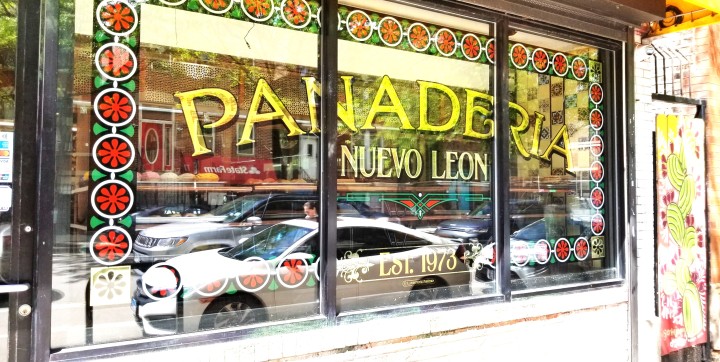
Photo above: Reflection of West 18th Street, Pilsen, on a local bakery’s window (Chicago, 2024)
Chicago’s neighbourhood of Pielsen is named after the city of Plzeň in the Czech Republic. Until the 1950s, it remained mostly inhabited by European immigrants, but as I mentioned in my previous post, gentrification and new infrastructure in the Near West Side displaced many Mexican families, which then moved to Pilsen. The book “Making Mexican Chicago, From Post-war Settlement to the Age of Gentrification” (Mike Amezcua, University of Chicago Press, 2023) documents this process, intertwined with social and discrimination struggles; Amezcua highlights the role of Anita Villareal, a displaced Mexican immigrant, who got her license as a real estate agent in the 1950s, and began exploring other areas in Chicago, such as Pielsen and what is now known as “Little Village” (La Villita). Villareal was a visionary, not only buying and selling housing, but taking a holistic approach by facilitating the establishment of businesses and services, catering to the Hispanic community. Nowadays, Pielsen is a vibrant neighbourhood with schools, Mexican grocers, restaurants and bakeries, as well as parks, a community centre, and the renowned National Museum of Mexican Art (1852 W. 19th Street, Chicago, IL 60608):
During our visit to Chicago, my husband and I had the chance to spend an afternoon in Pilsen, so our first stop was the museum. Admission is free, but donations and a visit to their gift shop are encouraged, to support the museum. Pieces from the permanent collection tell stories from Mexico’s past and present, and feature artists from both sides of the border; some examples are alebrijes, the chimeras that defy Biology, traditions, political themes, or the bride who missed her ballroom dance:
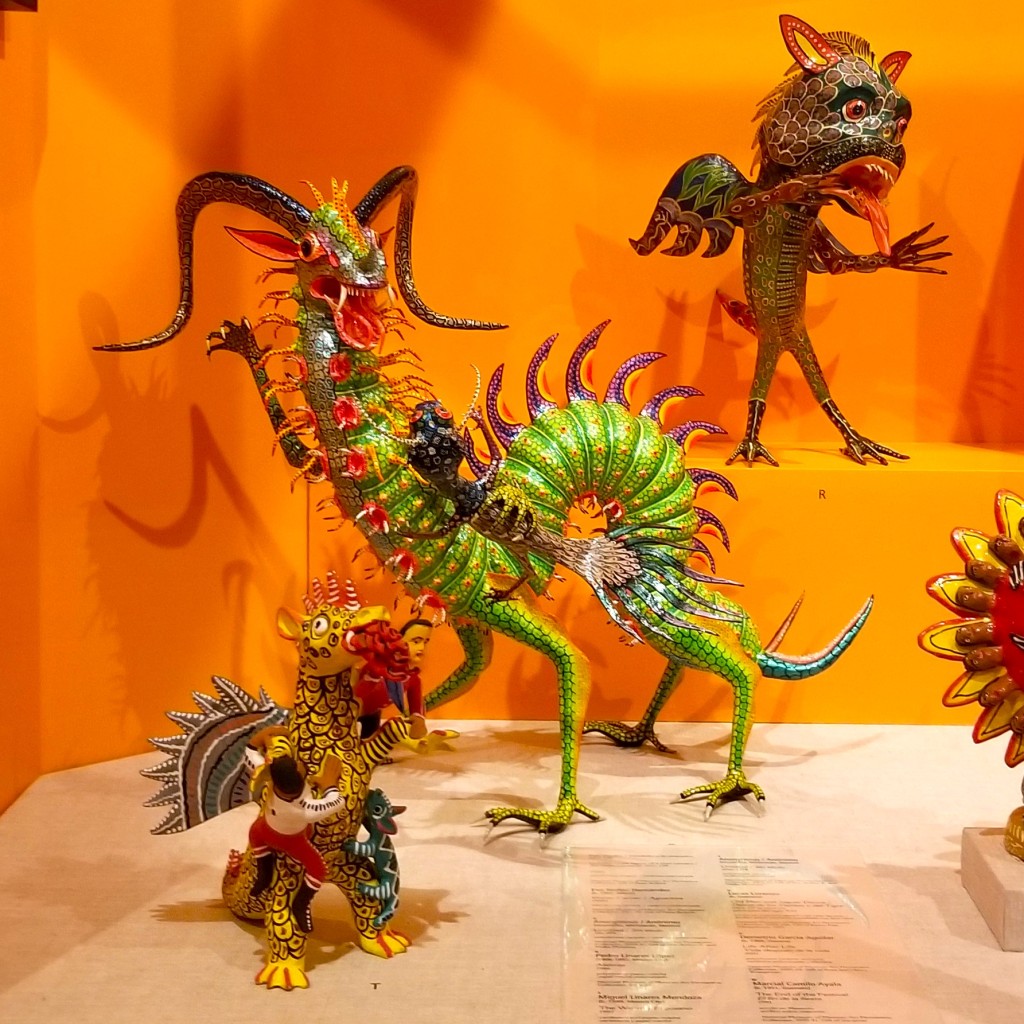
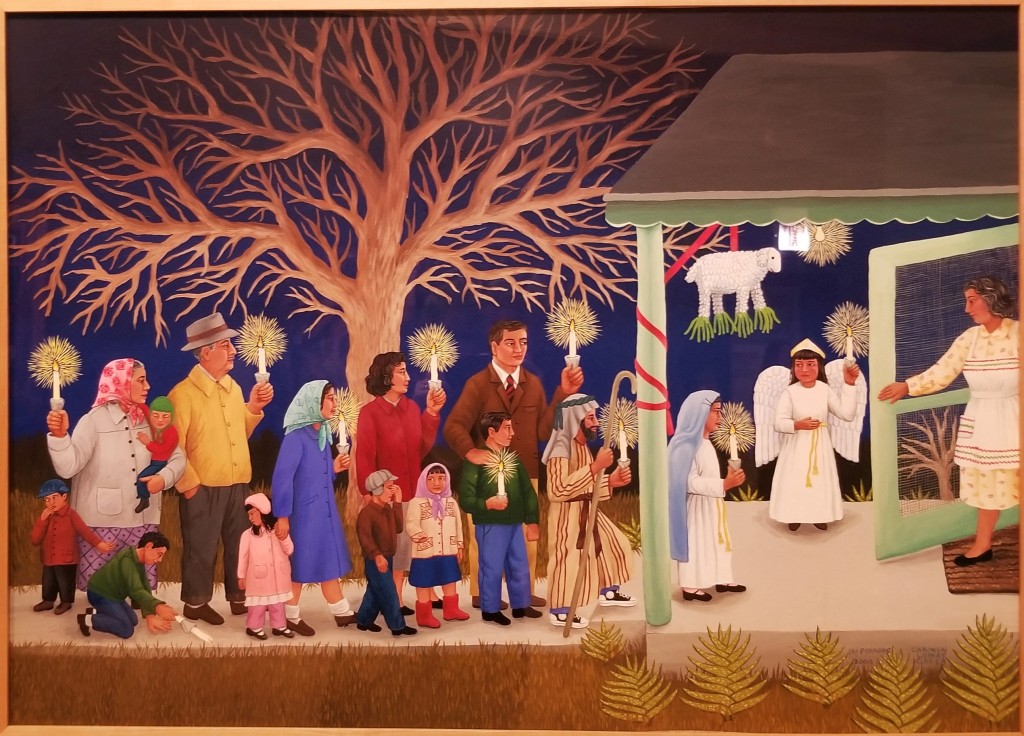



There are always several temporary exhibitions, currently: “Arte Diseño Xicágo II: From the World’s Fair to the Present Day”, until August 11, 2024, showcasing art by Mexican and Chicagoan artists who participated in the 1893 World’s Columbian Exposition, a pivotal event in the history of the city. “Mariachi Potosino: The Sound of Home”, until November 10, 2024, recounting the story of musician José Cruz Alba (1918-2002) and his journey from Durango (Mexico) to Chicago. And a must-see exhibit: “Ancient Huasteca Women: Goddesses, Warriors and Governors” until July 21, 2024, curated by archaeologists David Antonio Morales and María Eugenia Maldonado from the Mexican Instituto Nacional de Antropología e Historia (INAH, National Institute of Anthropology and History).



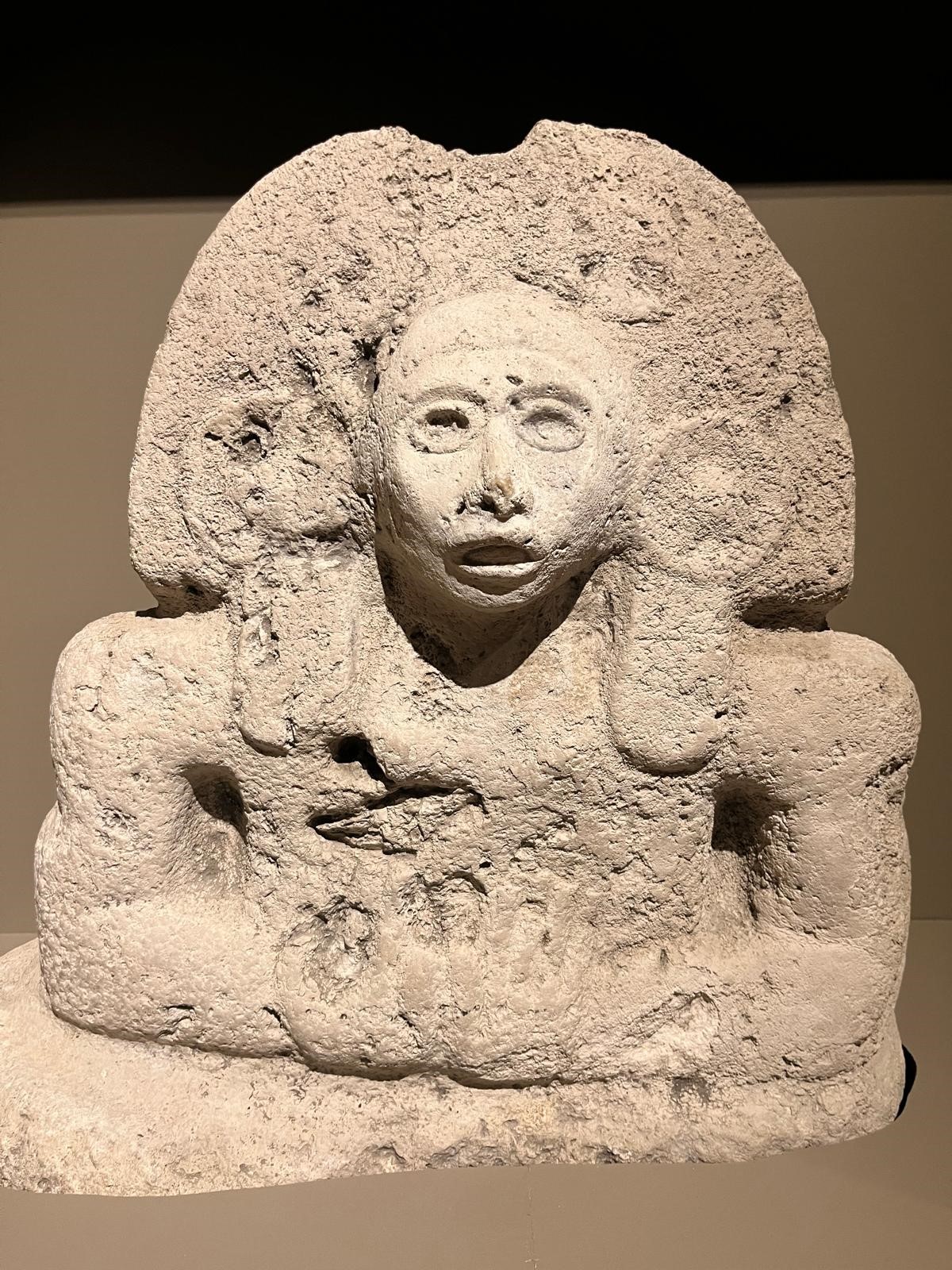
This collection comprises close to 100 original artifacts from the Huasteca (wăs-Te-kah), a region along the Gulf of Mexico, including portions of present-day states of Veracruz, Hidalgo, Tamaulipas and San Luis Potosi. These ancient items date from approximately 1500 BCE to 1400 CE, and highlight several influential roles of women in la Huasteca, including governesses, religious figures, warriors, and even a player of the juego de pelota (sacred ballgame). A recent finding is presented as the introduction to this amazing collection, La joven de Amajac (The Young Woman of Amajac); the figure was found in 2021 in an orange grove during tilling of the soil, and was first thought of a deity related to fertility; further examination, especially of her hairdressing, and the discovery of a second statue of the same figure in 2023, have changed the established notions of female roles in the region of La Huasteca. Farmers and workers in the municipality of Alamo Temapache, Veracruz, proudly hold the honour of making these discoveries; the region’s visitor information handout reads:” The Young Governess of Amajac. Discovered in a citric fruit grove on January 1, 2021 by locals in the community of Hidalgo Amajac, in the municipality of Alamo Temapache, The Young Governess of Amajac is a finding that changes history; the two tall hair strands are characteristic of a female figure of high hierarchy, such as a ruler, not a deity”:

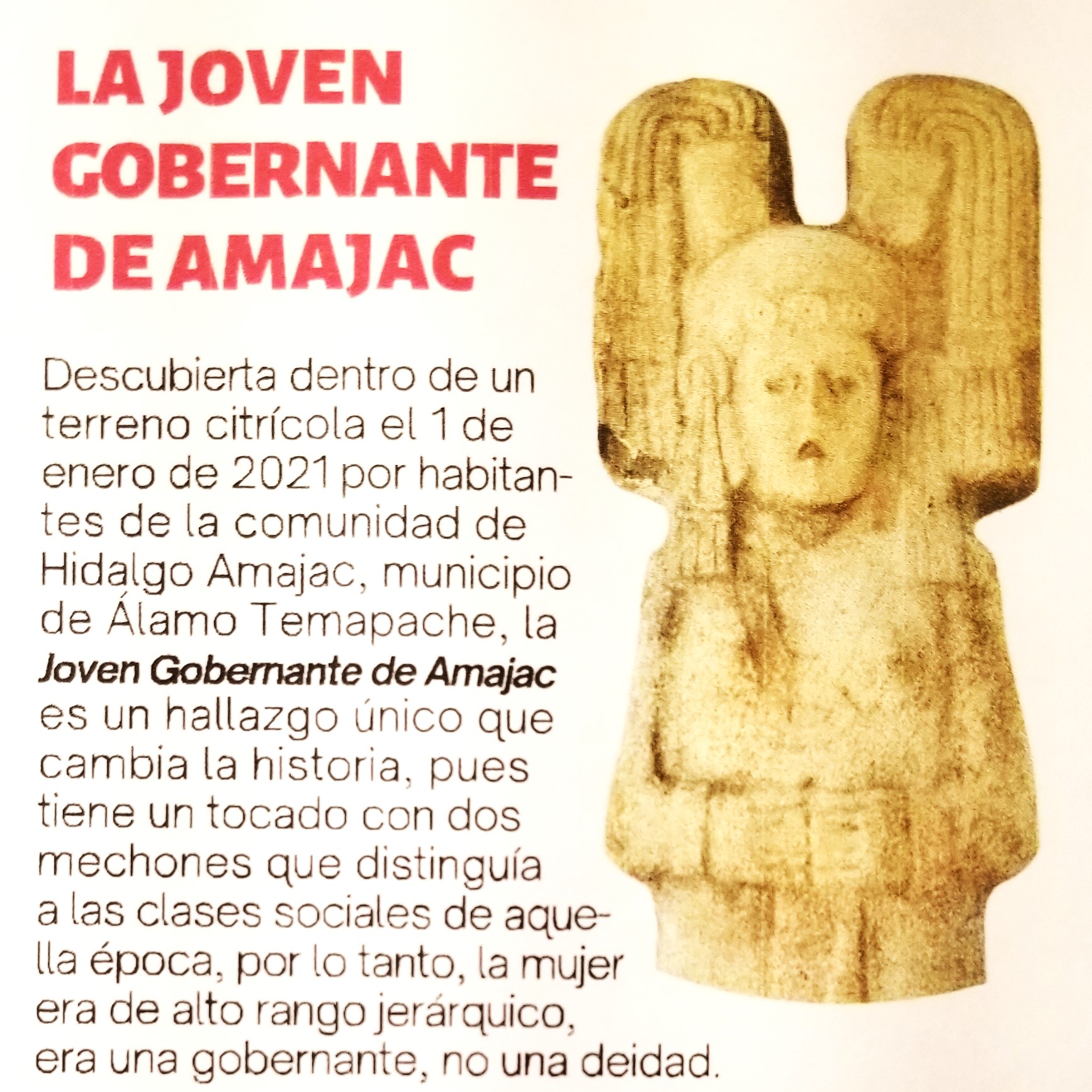
After the museum we were ready for a nice meal; walking one block north, to West 18th Street, there is a wide variety of Mexican and other Latin American restaurants, taco shops, bakeries, take out food, ice cream shops, and so on. We chose 5Rabanitos (1758 West 18th Street, Chicago, IL 60608, photo below, from their website):

As described by the MICHELIN Guide: “The deliciously authentic food just brings it all home. Chef Alfonso Sotelo worked for Rick Bayless and his accomplished resumé comes to life in this kitchen.” We started with a bowl of their homemade tortilla chips and two house salsas (roasted tomatillo and 3-chile), then my husband had the caldo de mariscos (seafood soup) with shrimp, scallops, octopus, squid, and veggies, in a red chile broth (photo below, left), and I enjoyed a trio of tacos (beef barbacoa, pork al pastor, and pork carnitas), all topped with their signature rabanitos (radishes, photo below, right):


And as I mentioned in my previous post, their tres leches cake was both beautifully presented, with whipped cream and fruit on top, and deliciously moist inside:


We had to ask for some of the food to go, but that did not stop us from visiting two more food stores in the neighbourhood. Carnitas Uruapan (1725 West 18th Street, Chicago, ILL 60608; take-out only at this location, photo from their website):
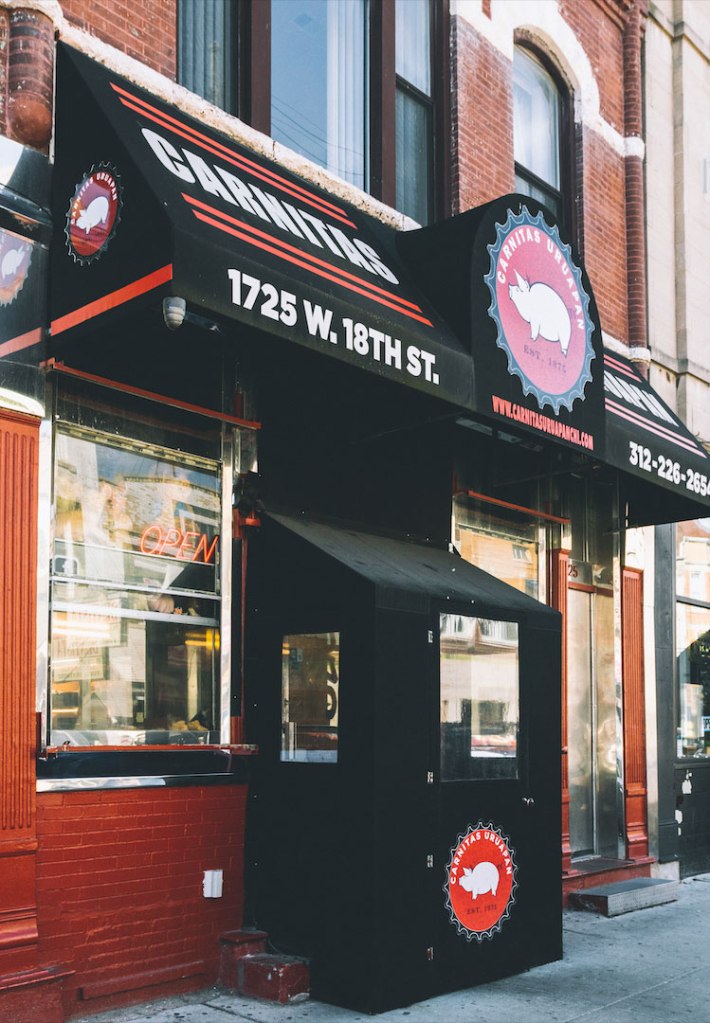
Founded in 1975 by Inocencio Carbajal (aka “El Güero”), is a landmark destination where Michoacán style carnitas are as authentic as it gets. We only got half a pound of carnitas with cuerito (skin). They gave us a small tub of their spicy red sauce, and that evening, we enjoyed them for dinner in our hotel room, along with our leftovers.
Our last stop was Panadería Nuevo León (1634 West 18th St., Chicago, Illinois) offering traditional Mexican buns, sweet bread (pan dulce), cakes, tortillas, soft drinks and snacks since 1973 (photo at the top of this post). Upon entering the bakery, I felt transported to an old panadería in Mexico, with its wooden cabinets and glass doors, and self-serve system of trays and long tongs. They had all that could be expected, such as conchas, donuts, and orejas:

There was also a large selection of polvorones and cookies (photo below, left); I got a yo-yo (also called beso – kiss), two soft cookies, muffin-top-like, put together with raspberry jam, with a coating of finely grated coconut (photo below, right):


And we missed so much! A walking tour of the many murals around the neighbourhood, fruit and exotic flavoured ice cream bars (paletas), grill houses, taco joints, oh my, so much to do and try, so little time! Well, there will be other opportunities. I have already shared my recipes for some of the food mentioned in this post; click on the highlighted text for full stories and recipes:
This is How the Tortilla Chip Crumbles
How to Cook Barbacoa without a Pit in the Ground
How to Make Tacos al Pastor without a Spinning Vertical Grill
Pan Fried Carnitas
A Mother’s Day Treat – Pastel de Tres Leches
Puff Pastry Orejas and Abanicos
Polvorones – Sweet Bread
In the near future, I will be sharing my recipes for some of the rest, such as caldo de mariscos, and more pan dulce.
For your convenience, click on the highlighted text below for products available on Amazon™. DISCLAIMER: Any reviews included in this post are my own, for items I have purchased, not provided by any company; as an Amazon Associates Program affiliate, I might receive a commission for any purchases originated from the links below, at no extra cost to you. Thank you to readers who have bought other products starting with a click from my links!


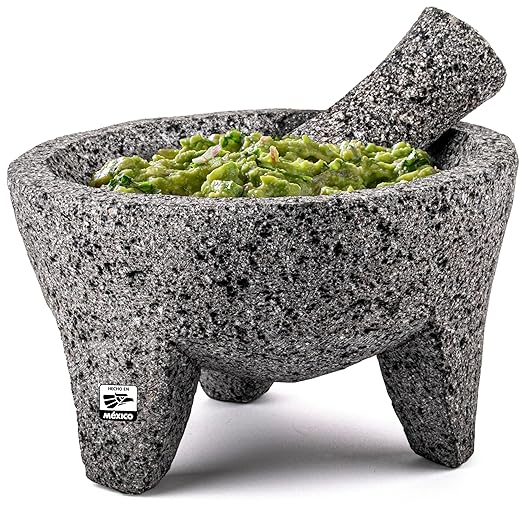








Wow! It seems like a must visit place, Irene. Thanks for sharing.
LikeLiked by 1 person
Thank you, Punam!
LikeLike
What an amazing slice of Mexico in Chicago. I would love to go to the museum of Mexican art — the samples you showed are exquisite.
LikeLike
Thank you, Eilene!! Yes, I was so impressed with that museum, and they keep it free so everyone can enjoy. And next time I go I will definitely do the walking tour of the murals, and eat more lol!
LikeLiked by 1 person
I know where I’m going if I travel to Chicago!
LikeLiked by 1 person
Yay, hope you get to go soon, Lou!
LikeLike
You bring the Pilsen neighborhood of Chicago alive! Thanks, we will plan a visit this summer. The food and the museum sound terrific.
LikeLike
Awesome, have fun!
LikeLiked by 1 person